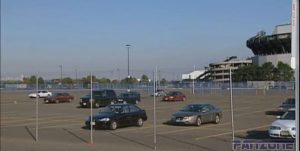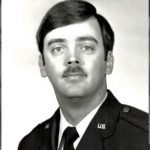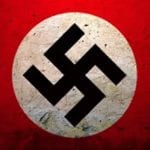 Mysteries
Mysteries  Mysteries
Mysteries  History
History 10 Surprising Stories About the Texas Rangers
 Humans
Humans 10 Philosophers Who Were Driven Mad by Their Own Theories
 Miscellaneous
Miscellaneous 10 Video-Game-Worthy Weapons and Armors from History
 Weird Stuff
Weird Stuff 10 Psychics Who Accurately Predicted Wartime Events
 The Arts
The Arts 10 Pieces of Art Inspired by a Broken Heart
 Health
Health 10 Science Fiction-Sounding New Medical Treatments
 History
History 10 Surprising Facts About the Father of Submarine Warfare
 Space
Space Ten Astonishing New Insights into Alien Worlds
 Weird Stuff
Weird Stuff 10 Bizarre Summer Solstice Rituals Still Practiced Today
 Mysteries
Mysteries Top 10 Haunting Facts About the Ghost Ship MV Alta
 History
History 10 Surprising Stories About the Texas Rangers
 Humans
Humans 10 Philosophers Who Were Driven Mad by Their Own Theories
Who's Behind Listverse?

Jamie Frater
Head Editor
Jamie founded Listverse due to an insatiable desire to share fascinating, obscure, and bizarre facts. He has been a guest speaker on numerous national radio and television stations and is a five time published author.
More About Us Miscellaneous
Miscellaneous 10 Video-Game-Worthy Weapons and Armors from History
 Weird Stuff
Weird Stuff 10 Psychics Who Accurately Predicted Wartime Events
 The Arts
The Arts 10 Pieces of Art Inspired by a Broken Heart
 Health
Health 10 Science Fiction-Sounding New Medical Treatments
 History
History 10 Surprising Facts About the Father of Submarine Warfare
 Space
Space Ten Astonishing New Insights into Alien Worlds
 Weird Stuff
Weird Stuff 10 Bizarre Summer Solstice Rituals Still Practiced Today
The Day After: Ten Sights from 9/12/2001
By now, the story of 9/11 has been told and retold, the stunning statistics set in stone. Nearly 3,000 dead. Four hijacked planes. Two collapsed skyscrapers. A section of the Pentagon—the defense hub of the world’s most powerful country—seriously damaged. A Pennsylvania field forever impacted.
The images from that day are equally unforgettable. Explosions and implosions, running and screaming, terror and tears. But the sun set and rose again, bringing a new day of urgency, chaos, and, perhaps most hauntingly, eerie silence. Here are ten scenes from September 12, 2001.
Related: Top 10 Haunting Images Of Historic Tragedies [DISTURBING]
10 The Pile: Ground Zero’s Hellscape
The implosion of the Twin Towers—by far the largest buildings ever to collapse—created an unfathomable 1.8 million tons of wreckage over nearly 15 acres (6 hectares). By the time major cleanup was completed in May 2002, more than 108,000 truckloads of debris had been removed from the site.
On September 12, the scene was… impossible. A twisted, still-smoldering mountain of metal, several stories high with voids dropping unknowable depths, stretched out before rescue workers. A thick layer of dust—some mixture of ash and pulverized plaster, furniture, and, yes, people—permeated and infiltrated every crack and crevice, making the already indistinguishable even less identifiable.
The media took to calling the site “Ground Zero.” Rescue workers opted for a simpler term: The Pile. And on September 12, The Pile presented an unprecedented conundrum. Less than 24 hours after the collapse, there were assumedly survivors pinned in the unstable deathtrap sprawled out before them. How could they be saved without adding more first responders to the yet unknown but likely ungodly death toll?
Meanwhile, civilians living in Lower Manhattan had a different but no less cringeworthy name for the WTC wreckage. In America’s most vertical metropolis, those living in high-rise apartment buildings and working in surrounding skyscrapers had an almost indescribably horrible bird’s-eye view of the devastation. A scene a thousand words couldn’t aptly describe was reduced to ironic, halting brevity: The Pit.[1]
9 “The Cones Are Bodies”
Given the sheer magnitude of the cascading tragedy that was 9/11, the dead took a sickeningly broad array of shapes and sizes. Even before the towers collapsed, bodies were strewn across the plaza, comprising victims from the two planes, those who leaped or fell from upper floors, and several burned to death by impact fireballs that funneled down the buildings’ elevator shafts. Perhaps the unluckiest body was Danny Suhr, who became the first firefighter killed that day when a falling body landed on him.
As the frantic (and, sadly, almost entirely futile) rescue efforts stretched into September 12, those combing the rubble for potential survivors resorted to a macabre way of simultaneously avoiding duplicate work and identifying the dead for coroner’s office personnel: They marked them with orange cones, the type used to block off traffic during construction.
Body parts were simply everywhere. Human remains were found atop adjacent skyscrapers, in the graveyard of a church across the street, and stuck in scaffolding in nearby buildings. Part of one body was found nearly a quarter-mile away from the disaster’s epicenter. All totaled, nearly 22,000 body parts would eventually be found—more than seven times the number of deaths.
None of this was known on September 12, however. Understandably preoccupied with finding the living in a confusing dust-covered wasteland, rescue workers used makeshift markers to tell their comrades that this gruesome ground had already been covered.[2]
8 The Wall of the Missing
Near the World Trade Center wreckage, a few families whose loved ones remained unaccounted for taped missing persons flyers on a nearby building. Hundreds followed suit in what quickly became a gathering point for desperate family members seeking information and reporters seeking human interest stories.
Soon, well-wishers and good samaritans also descended upon the wall, leaving flower wreaths and candles and handing out water and food to inconsolable family members. Though the spot was by no means the only place where flyers were posted—indeed, approximately 90,000 were hung at walls, lampposts, subway stops, and phone booths throughout New York City—it became a de facto humanitarian headquarters as emergency workers scavenged the nearby devastation for any signs of life.
The futility of it all is heartbreaking in hindsight. Often, those posting flyers were clinging to one of three possibilities: that their loved ones were still alive in the rubble, were incapacitated or unconscious without ID at a nearby hospital, or were wandering the streets of Manhattan in a shell-shocked daze.
In the end, very few of the faces on those flyers would ever be seen alive again. The WTC attacks were almost entirely a zero-sum event: Those extracted before the event survived—and only rarely with serious injuries—while those that did not perished.
Today, a wall of photos depicting all WTC victims can be found at the September 11 Memorial & Museum in Lower Manhattan.[3]
7 Abandoned Automobiles

At the parking lots of commuter rail stations and bus park-and-rides across Long Island and northern New Jersey, cars slowly disappeared as their owners returned for them, generally after massive delays getting out of Manhattan. Unfortunately, not all the cars left; many were the automobiles of people who died in the Twin Towers.
The New York City metro area is immense—easily the largest in the United States—and commuters come from an hour or more away in all directions to reach Lower Manhattan offices. In the aftermath, relatives of victims fetched vehicles from local transportation hubs—a macabre logistical detail of sudden death.
But especially at larger commuter locations, not all automobiles were claimed quickly. One such place was a vast bus park and ride lot in East Rutherford, NJ. The lot was adjacent to Giants Stadium, home to the National Football League’s New York Giants and Jets.
John Mara, the Giants’ CEO and son of the team owner, remembers trying to wish away the eerily unattended cars in the days following the attacks. Mara hoped they were owned by people who got home some other way on 9/11—understandable since bridges and tunnels were sealed off—and simply hadn’t retrieved their vehicles yet. Unfortunately, in most cases, the worst-case scenario had occurred.
“To drive past that every day, to see those cars and know those people had perished, that was just a gut-wrenching scene,” Mara recalls.[4]
6 Verboten Photo: The Falling Man
On September 12, the Allentown, Pennsylvania, Morning Call ran a long, narrow photo buried on page 28. Only a handful of other papers ran the shot, which was snapped by Pulitzer Prize-winning photographer Richard Drew.
A jarringly minimalistic departure from the images of billowing smoke and ferocious fireballs, the photo depicts an adult male amid the steel-slatted backdrop of the North Tower. He is completely vertical, head over feet, as he descends. The scene evokes an uncomfortable faux peacefulness; in reality, the man was plummeting in a violent, flailing spin.
“I have eight or nine frames of this gentleman falling, and the camera just happened to cycle in that time when he was completely vertical,” Drew said later.
It was arguably 9/11’s most disturbing single image, one stripped of fire and gore to showcase a hopeless, horrifying choice between burning alive or diving a quarter mile to certain death. Nearly 200 others made the same choice that day. The photo now known as “The Falling Man” generated such an uproar—many found it exploitative and intrusive—that it largely disappeared for several years, leading Drew to deem the image “the most famous photo no one has seen.”
In 2006, a documentary called “9/11: The Falling Man” detailed the controversy surrounding the picture. The film also uncovered the man’s likely identity: Jonathan Briley, a 43-year-old audio technician for Windows on the World restaurant. A major clue was an orange tee shirt visible in one photo of Drew’s series.[5]
5 Lights Out in the City That Never Sleeps
The 9/11 attacks caused the greatest disruption to America’s cultural, media, and economic capital in the city’s centuries-long history up to that point. Yellow fever outbreaks, the Civil War draft riots, the Great Depression, the Second World War… nothing had ever changed New York City overnight like 9/11, nor would again until the COVID-19 pandemic.
For starters, the New York Stock Exchange went four full business days without opening. The attack occurred early enough on September 11 that the exchange did not open that day and remained shut until the following Monday. Not since the inception of World War I had the NYSE closed for so long.
The starkest dark occurred six miles north of Wall Street. In Times Square, the bright lights of Broadway failed to shine for scheduled performances—aside from performer or personnel strikes—for the first time since World War II. The theatres had no shows on 9/11 and stayed dark the next day before beginning to reopen on September 13.
Professional sports were also affected. The National Football League canceled all games the weekend following 9/11, moving them to the end of the season and pushing the playoffs back. Major League Baseball games were also postponed one week, interrupting steroid-enthusiast Barry Bonds’s march toward the single-season home run record and leading to the World Series being played in November—punctuated by a dramatic Derek Jeter homer post-midnight on Halloween—for the first time.[6]
4 Rerouting NYC’s Heartbeat: The Subway System
The collapse of the towers damaged several vital tunnels in the country’s largest, most intricate subway system. One station directly under the WTC, Cortlandt Street, was completely destroyed and would draw gasps from riders on trains bypassing the station when the tunnel reopened a week later.
Nearby, a New Jersey commuter rail station known as the PATH (short for Port Authority Trans-Hudson River) was entirely destroyed in the collapse, necessitating a yearslong reroute. Notably, many PATH train occupants were among the first to exit the North Tower (the first building struck) following its impact—including this list’s author.
Despite the devastation, just a day after the attacks, most of the city’s subways were operating, albeit skipping the majority of stations in largely evacuated Lower Manhattan. One exception was the Lexington Avenue line—the 4, 5, and 6 trains, also known as the Green Line—which recommenced connecting East Midtown to Wall Street the day after 9/11. The already busy line would be inundated to what many called “crush capacity” until its sister routes came back online.
Still, New Yorkers saw riding the subway in the aftermath of 9/11 as an act of defiance against terror. Despite the ease with which a crowded subway could be bombed in a free society, the subway symbolized New Yorkers’ stiff upper lips. As for the Cortlandt Street station, it didn’t reopen until 2018.[7]
3 History-Making Headlines: September 12 Newspapers
For the third time in its history, on September 12, 2001, the front page of the New York Times featured a massive 96-point, all-caps font. “U.S. ATTACKED,” it read, atop the smaller-but-still-enormous subhead “Hijacked Jets Destroy Twin Towers and Hit Pentagon in Day of Terror.” For the record, the previous two 96 font headlines were July 21, 1969 (“MEN WALK ON MOON”) and August 9, 1974 (NIXON RESIGNS); it would be revived once more on November 5, 2008, upon the election of America’s first Black president (“OBAMA”).
Elsewhere, newspapers scrambled to convey the tragedy with due urgency while remaining within the bounds of decency. The Washington Post prioritized the moment when the world realized this was no mere accident: the second plane approaching the South Tower. The NY Daily News carried a similar image, declaring, “It’s War.” With its “Act of War” headline splashed over the bright orange fireball of the second plane’s impact, USA Today quoted everyone and no one all at once, citing a still unknown but obviously “horrendous” death toll.
Across the country and around the world, various combinations of the South Tower fireball and the word “war” were the most common headlines—so common they seem journalistically lazy when perused collectively. “A Declaration of War,” read the Guardian (UK). “A Day of Infamy,” declared the Globe & Mail (Canada), cheesily channeling Franklin D. Roosevelt post-Pearl Harbor. The San Francisco Examiner distinguished itself, albeit oddly, with a one-word headline: “Bastards!”[8]
2 Grounded: Stranded at Airports across the Continent
As hijackings mounted on 9/11, the U.S. Federal Aviation Administration ordered the immediate grounding of more than 4,500 aircraft in the country’s airspace. Tens of thousands of travelers ended up at airports other than those on their tickets. There would be no more commercial flights for two full days.
The scene in Little Rock, Arkansas, was typical. Airports became an odd blend of the completely stunned and the temporarily irate. Would-be travelers stood in terminals, necks craned toward TVs, knowing full well they weren’t going anywhere. Meanwhile, flights arrived with outraged, out-of-the-loop passengers who undoubtedly felt shallow and silly upon learning of the deadly circumstances surrounding their inconvenience.
Planes were grounded, heads were spinning… and no one had anywhere to go once the finite number of rental cars was quickly snapped up. Many spent three or more days in airport terminals, which today is basically a standard security line.
The emergency made one obscure place famous. In northeastern Newfoundland, Canada, the tiny town of Gander, population 11,800, became a victim of its aeronautical geography. The FAA’s order to land “at the nearest airport” made Gander a bullseye for nearly 40 planes traveling from Europe to North America along a familiar, arcing route that uses the Earth’s curvature to save time and mileage. Nearly 7,000 passengers and crew literally descended on Gander, whose extraordinary hospitality became the premise for the Broadway musical Come from Away, a Newfoundlander phrase describing anyone not from the remote province.[9]
1 Fido Finds One
By now, most know the story of John McLoughlin and Will Jimeno, two Port Authority Police Officers pulled from the wreckage of the Twin Towers. Immortalized in the 2006 Oliver Stone film World Trade Center, the pair was discovered by an army volunteer braving the rubble for survivors.
However, McLoughlin and Jimeno were discovered on the evening of September 11—two of only 18 people saved overall. Very few were rescued once the calendar turned to September 12. The last one was Genelle Guzman-McMillan, who was on the 15th floor of the North Tower when it imploded.
When she came to, she was unable to move, her body contorted and her legs pinned and crushed. Her head was trapped between two pillars. She could hear but couldn’t speak—not even to cry for help. There she lay for over a day.
It took 27 hours for Guzman-McMillan to be found by a rescue worker. Specifically, a rescue worker with four legs. A German Shepherd named Trakr, one of about 300 employed to find first survivors and later bodies in the wreckage, initiated what would sadly become the disaster’s final rescue.
Guzman-McMillan is still alive today. She regularly shares her story at various speaking engagements and authored a book about her ordeal, Angel in the Rubble, in 2014. [10]








